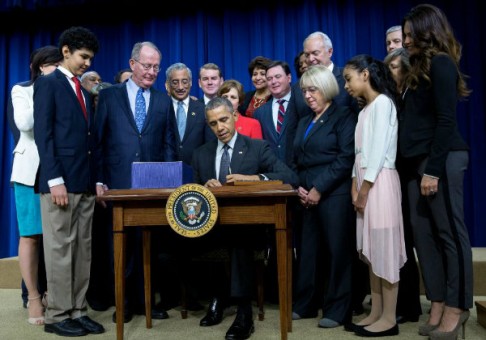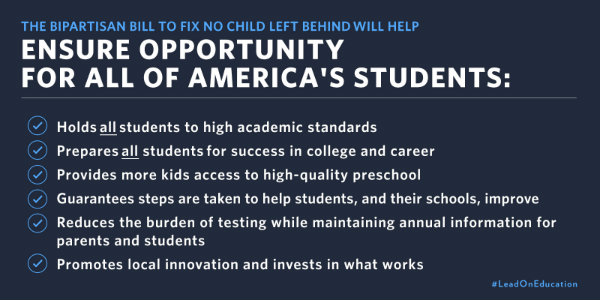A New Year Brings New ESSA Possibilities
A MiddleWeb Blog

We must continue to ask ourselves: How does this law translate into my school? Into my classroom? And with my students?
We must balance our energy to stay politically aware and active while meeting the need to give the students in our classrooms all we have. This means we give our students our time, our care, our knowledge, and our encouragement to apply themselves in meaningful and personal ways as they connect with learning opportunities.
The most important ESSA-related question we can ask ourselves is How can I expand possibilities for my students? This question comes with our renewed promise and commitment.
A Co-Teaching Commitment
- Co-teachers must see their students as variable learners. Plan for the range of learners that exist. Plan for multiple ways of engaging learners and representing material, along with multiple ways of growing and guiding strategic learners. Use the UDL guidelines to support your proactive planning.
- Maintain high expectations for all students. Focus on abilities and learning differences that exist within the natural variability in any classroom. The perfect way to expand learning opportunities for all learners is by watering UP the curriculum. Edwin Ellis outlines 9 key goals to guide educators as they support students’ processing of rigorous instruction.
- Once you know your students, it becomes natural to guide them in accessing and meaningfully manipulating the content.
Keep the instruction expectations high, meaningful, and accessible. Connect each student with what that student is currently able to do – then scaffold – guiding them out of the comfort zone in ways he or she can manage.
Expanding Literacy Possibilities
Under the new law, Education Week reports, the federal government will create a comprehensive national center “for students at risk for not achieving full literacy skills due to a ‘disability.’” The details about this center are still under development but here’s some of what the law says:
The Secretary shall establish a comprehensive center on students at risk of not attaining full literacy skills due to a disability and may provide technical assistance (directly or through grants or contracts) to [states and local school systems] carrying out activities under this program….
….The Comprehensive Center shall identify or develop free or low-cost assessment tools for identifying students at risk of not attaining full literacy skills due to a disability, including dyslexia impacting reading or writing, or developmental delays. The Center shall also identify evidence-based literacy instruction strategies and accommodations, including assistive technologies; provide families with information to assist such students, identify or develop relevant professional development, and disseminate the center’s products to SEAs, LEAs, regional agencies, and schools. (Source: NASSP/NAESP Summary of ESSA)
In addition, the new law provides for literacy education grants that will fund instruction on critical reading skills such as phonological awareness and decoding.
What Co-Teachers Can Do
Make the time for students who need additional processing, decoding, and reading time. Check out this quick TEDEd video (above) from Inside the Dyslexic Brain and then adjust your instructional activities to embed additional reading time. Understand what dyslexia is and how you can support the learning process.
Also think about how your current teaching routines already meet the needs of variable learners. How are you guiding your students to close personal achievement gaps in their literacy development? I am pleased ESSA acknowledges dyslexia (which was ignored in some earlier legislation) and the need for all students to gain the literacy skills they need to participate in grade level expectations.
January is a great time to review how you and your co-teacher(s) are making this happen. Before the new ESSA law begins to take major effect later in 2016, you can investigate some of its expectations, look at students’ current performance, and decide what is working and what needs further support. Then plan and work together to make it happen to the best of all abilities. There are always new ways to create possibilities for students.
How might you translate the Every Student Succeeds Act into your inclusive classroom?
































